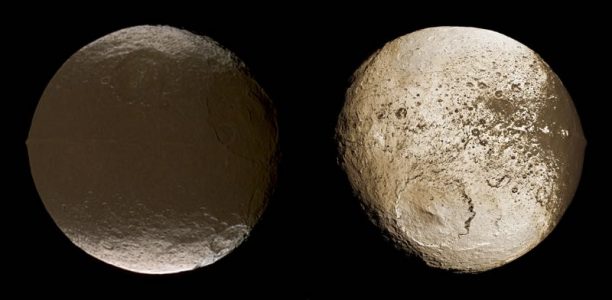Description
This moon is Saturn’s third largest, with a diameter of around 1470 kilometres. It is mostly composed of ice. A combination of thermal and orbital effects have led over billions of years to the leading side (left) retaining a dark dust layer, while the ice of the trailing side (right) is mostly dust free. Iapetus’s prominent equatorial bulge and impact craters (Engelier at bottom in the image at right) are also seen. These images were obtained on 10 September 2007 (right) and 27 December 2004 (left), by the narrow-angle camera on the Cassini spacecraft that is in orbit around Saturn. (Photo by Science Photo Library)






Reviews
There are no reviews yet.